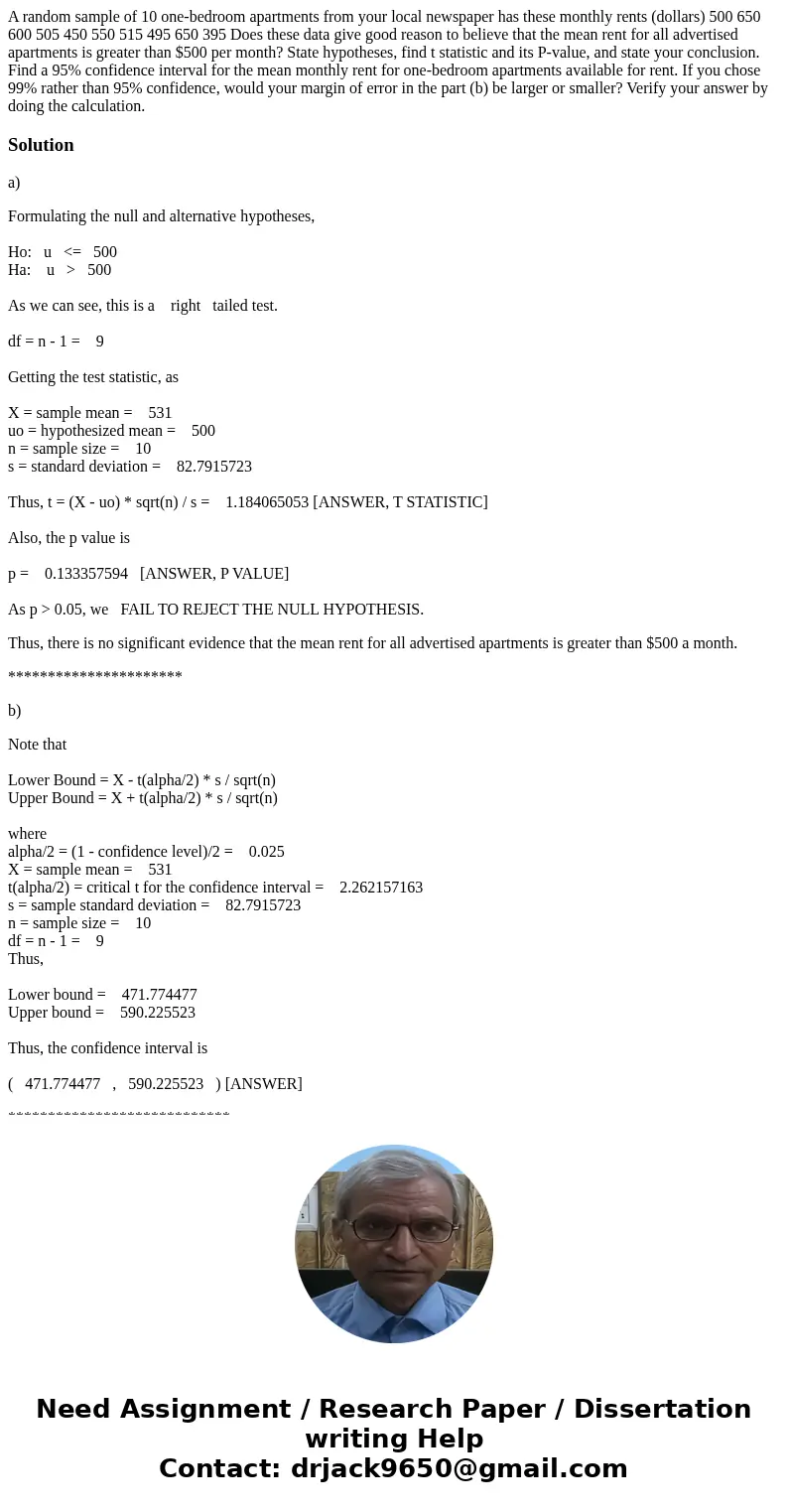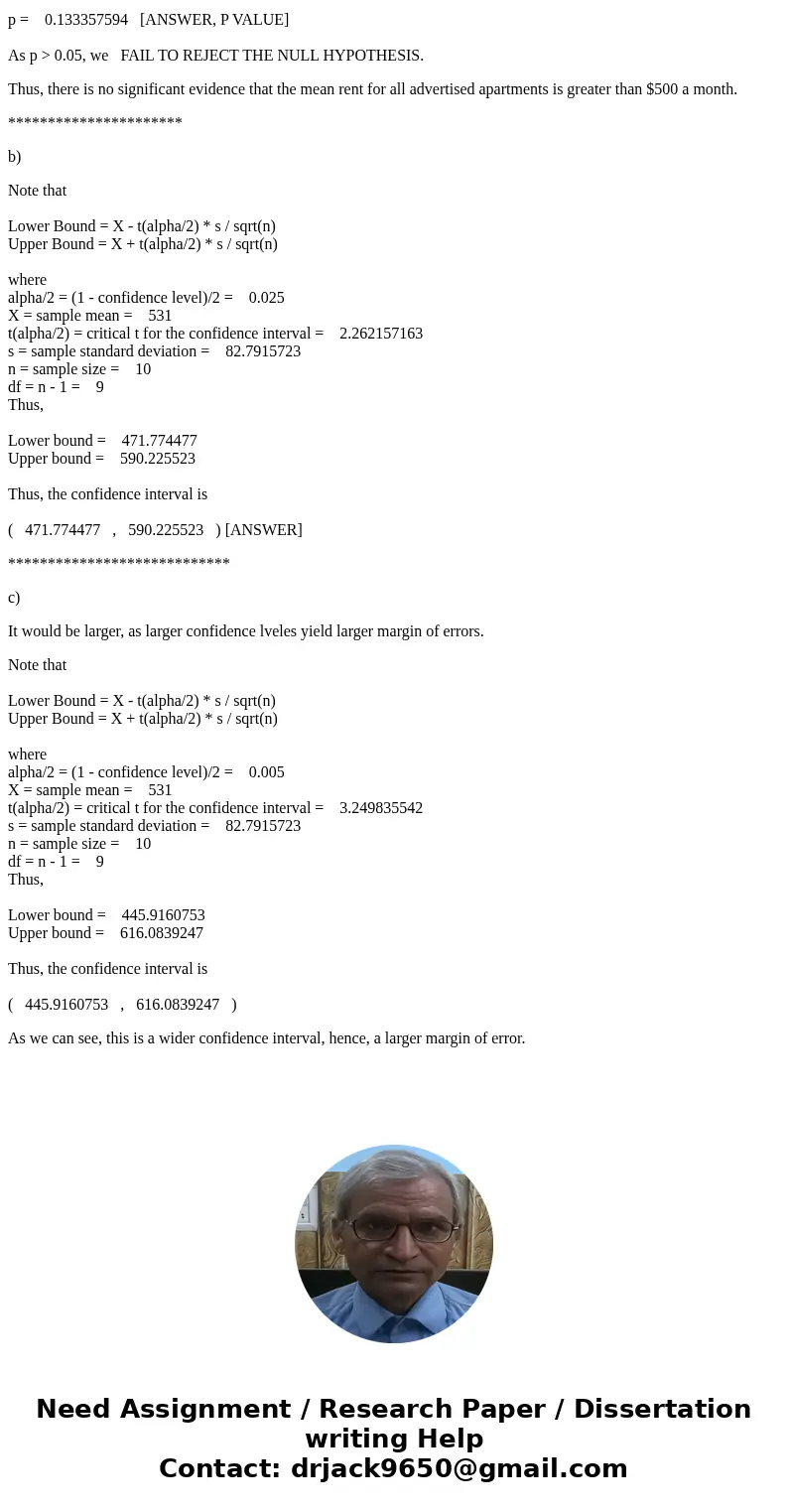A random sample of 10 onebedroom apartments from your local
Solution
a)
Formulating the null and alternative hypotheses,
Ho: u <= 500
Ha: u > 500
As we can see, this is a right tailed test.
df = n - 1 = 9
Getting the test statistic, as
X = sample mean = 531
uo = hypothesized mean = 500
n = sample size = 10
s = standard deviation = 82.7915723
Thus, t = (X - uo) * sqrt(n) / s = 1.184065053 [ANSWER, T STATISTIC]
Also, the p value is
p = 0.133357594 [ANSWER, P VALUE]
As p > 0.05, we FAIL TO REJECT THE NULL HYPOTHESIS.
Thus, there is no significant evidence that the mean rent for all advertised apartments is greater than $500 a month.
**********************
b)
Note that
Lower Bound = X - t(alpha/2) * s / sqrt(n)
Upper Bound = X + t(alpha/2) * s / sqrt(n)
where
alpha/2 = (1 - confidence level)/2 = 0.025
X = sample mean = 531
t(alpha/2) = critical t for the confidence interval = 2.262157163
s = sample standard deviation = 82.7915723
n = sample size = 10
df = n - 1 = 9
Thus,
Lower bound = 471.774477
Upper bound = 590.225523
Thus, the confidence interval is
( 471.774477 , 590.225523 ) [ANSWER]
****************************
c)
It would be larger, as larger confidence lveles yield larger margin of errors.
Note that
Lower Bound = X - t(alpha/2) * s / sqrt(n)
Upper Bound = X + t(alpha/2) * s / sqrt(n)
where
alpha/2 = (1 - confidence level)/2 = 0.005
X = sample mean = 531
t(alpha/2) = critical t for the confidence interval = 3.249835542
s = sample standard deviation = 82.7915723
n = sample size = 10
df = n - 1 = 9
Thus,
Lower bound = 445.9160753
Upper bound = 616.0839247
Thus, the confidence interval is
( 445.9160753 , 616.0839247 )
As we can see, this is a wider confidence interval, hence, a larger margin of error.


 Homework Sourse
Homework Sourse